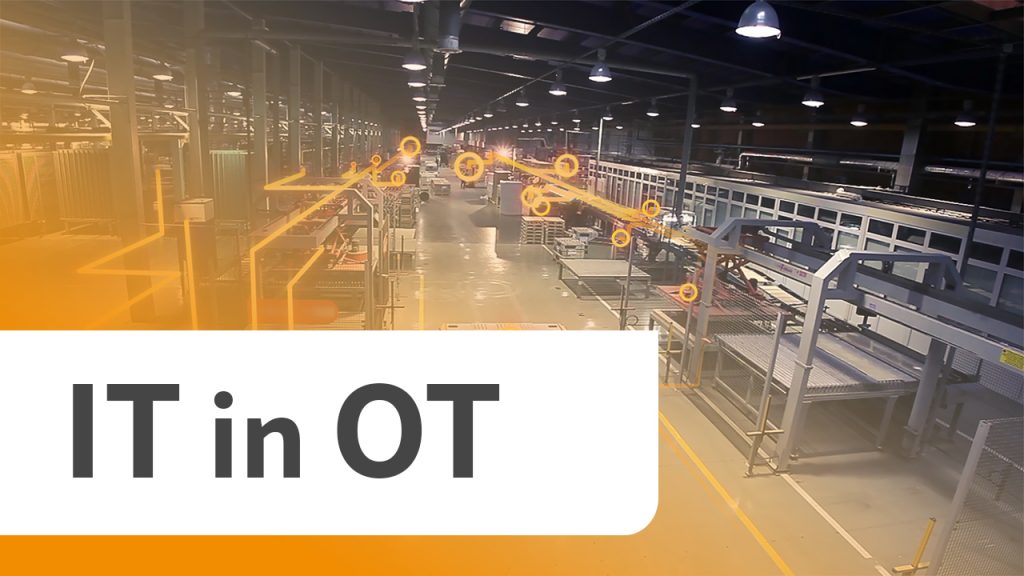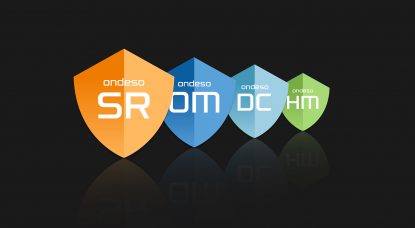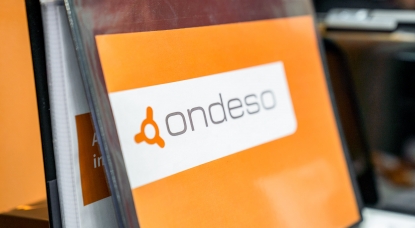Real-time communication between machines, networked production facilities, digital twins and individual support from robots and artificial intelligence: the digitization of manufacturing companies in Germany is actually progressing. According to a study by industry association Bitkom, around 73 percent of German industrial companies want to change not just individual processes in the course of Industry 4.0, but entire business models.
Concepts for the smart factory therefore exist, and so does the necessary technology to implement them. Nevertheless, many digitization projects disappoint in their implementation because the collaboration between OT and IT, i.e., those responsible for production, the IT department and external service providers, does not function smoothly. But this does not have to be the case. With these practical tips, collaboration between the business department and IT will work.
Excursus: What is Operational Technology (OT)?
In contrast to IT, OT is a fairly new term. OT is the hardware and software that enables direct monitoring or control of physical devices and processes in the company. In simpler terms, OT involves the production-related control of all operational processes in the smart factory.
This in turn means that OT is clearly located in the respective specialist area of manufacturing or production. But the factory of the future is based on countless sensor data and their networking with each other and with control systems or the cloud. However, this networking is also a challenge for the central IT department, because the smart IIoT devices generate data in the terabyte range. In addition, the communication, mostly machine-to-machine (M2M), must be secured in real time. Add to this the machine-based evaluation of data via edge computing and AI, and IT is back in the thick of things.
There are many industrial PCs in OT environments. Learn how to manage these clients securely and reliably in this video.

Good communication between OT and IT is therefore necessary. However, misunderstandings occur time and again here because different languages are spoken. Example:
In German, the word “Sicherheit” stands for both “safety” and “security”. When the word “Sicherheit” is mentioned, production and OT specialists think of functional machine safety, while IT specialists think of security and firewalls. Also: IT projects usually take the form of meetings – OT people tend to think of projects as physical work like welding or assembling.
So what should you do to make an IT project a success in the OT environment? The following practical tips show how collaboration between business departments and IT specialists can run smoothly:
Even before the project starts, those responsible can clear many hurdles by making the general conditions clear to everyone involved. The following points are particularly important:
If you are working with external service providers, you can make the project start much more pleasant if you pay attention to the following facts:
When the project starts and representatives of several departments as well as external service providers are in the house, it is important to ensure that everything runs smoothly. It has proven effective to start with a short factory tour. This creates awareness of challenges, problems and requirements in the respective production facility. At the beginning, align the expectations of the participants. After all, the people who work in operations are often not the same people who initiated the project in staff departments. With changing contacts, expectations can change and information can be lost.
Also point out again the respective working hours and shift changes of the contact persons as well as downtimes of the production. It is annoying if the shift supervisor in the plant works from 6:00 a.m. and the consultant who arrived at 9:00 a.m. no longer has a contact person from 3:00 p.m. onwards. Perhaps the consultant should arrive here the evening before or the OT specialist should change his shift.
You should not forget the following points:
When the hot phase of the project is over, it is time to prepare a performance report from the acceptance documents, document the implemented changes to the systems, and discuss open or still unclear points in the course of follow-up support. A continuation or extension of the project should also be discussed in this context.
If everyone involved adheres to these rules, unavoidable cultural and technological differences between different departments will have far less impact on collaboration. This significantly increases the probability of successfully implementing a project. Because as we learned at the beginning: It’s not usually down to the technical requirements.
You don’t always have to reinvent the wheel. Specially developed software solutions can support you in implementing individual processes or entire workflows for optimal interaction between IT and OT. A proven and globally tested example of this is the client management software ondeso SR.
This allows you to easily configure and automate tasks such as patching clients, creating backups and distributing current software. The OT specialists also support you in the creation and planning of corresponding concepts and help you with the implementation as well as the sustainable integration into the ongoing production processes.

Here you can learn more about our company and our expertise as a pioneer and market leader.


Would you like to learn more? Do not hesitate to contact us, we will be happy to help you.